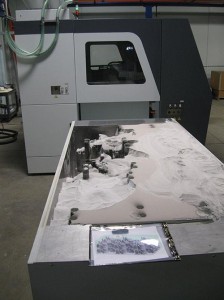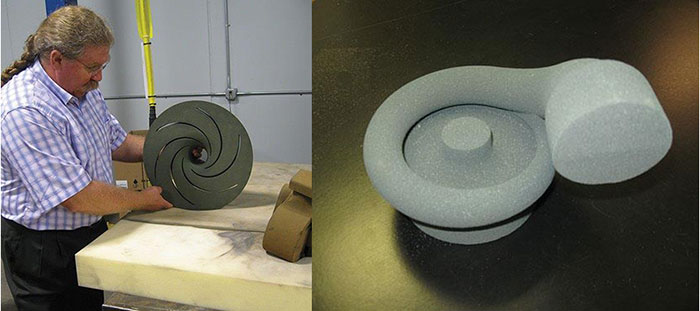
Late last year, Hoosier Pattern acquired the massive ExOne S-Max 3D printer and did more than just add another option to the services that they offer — they completely altered the way that they did business and interacted with their customers. You can design anything that you want, but if it can’t be manufactured cheap enough, or if it’s just too complex to be cast in whatever material you’re going to manufacture it in, then you’re simply not going to be able to make your product. Hoosier would often counsel their customers to scale back their designs, both due to manufacturing constraints and cost. Once a pattern was made, Hoosiers job was essentially done and off it would go to a foundry for the mould to be cast or any sand cores to be filled. Then, if changes were needed, it would come back to Hoosier Pattern and they would make adjustments to the design, necessitating another trip to the foundry. This is an expensive and time-consuming process. Not only was the cost prohibitive to smaller companies, but it often meant that the product would be less than envisioned when it finally made it to market.
The ExOne 3D Sand Printer at Hoosier Pattern from Reusser Design on Vimeo.
But the S-Max can print objects almost six feet long by three and a half feet wide. That means objects that traditionally would have had to have been cast in multiple pieces, including breaks and seams that can reduce the efficiency or aesthetic appeal of the product can now be printed in a single piece. Often times producing a prototype in a matter of hours where it used to take weeks or months. Not only does this reduce, or even eliminate, the cost of using a foundry, but, with 3D printing for rapid prototyping, designers can take risks and try new configurations that they wouldn’t have been able to afford previously. Now Hoosier Pattern’s salespeople are able to tell their customers to scale up their designs and actually add complexity.
The S-Max works by printing a pattern using foundry-grade resin onto a thin layer of specially engineered sand ranging from a silicon base to plastics and resins. The build volume is 70 x 39 x 27 inches and as each layer of sand is added, the build platform drops accordingly. This allows for greater complexity in design, and reduces the need for many parts to be machined separately and assembled after the fact. Being able to quickly 3D print cores, one time use inserts that create the cavities or gaps when casting things like engines blocks, means foundries can oftentimes be completely eliminated from the mould making process. In the case of especially fragile builds, this printing process even allows for a mould, core or prototype to be printed inside of its own shipping box, safely encased in a bed of sand so that it won’t be damaged during transport.

We’re used to seeing companies selling 3D printers and promising the future. But that future has to be manufactured, and as we see more traditional manufacturing companies transform their businesses and capabilities with 3D printers and more educational institutions teaching the next generation about 3D printing within a manufacturing context, it is easier than ever to believe in that future.




